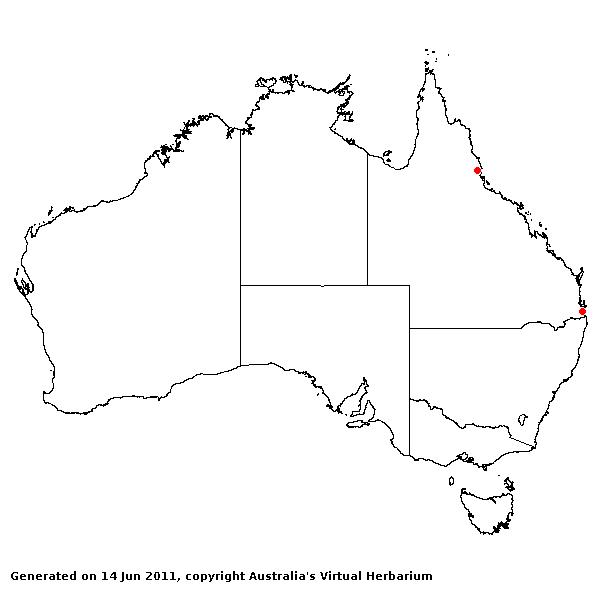Urochloa brizantha* (A. Rich.) R.D.
Webster. Australian Paniceae (Poac.): 233: (1987).
Classification. (GPWG 2001) : Subfamily Panicoideae. Paniceae.
Basionym and/or
Replacement Name: Panicum
brizanthum Hochst. ex A. Rich., Tent. Fl. Abyss. 2: 363 (1850).
Type of Basionym or
Protologue Information: LT: G.H.W. Schimper 89, 3 Oct 1837,
Ethiopia: Tigre: in declivibus meridionalis partis mediae et superioris monte
Sellenda prope Adouba (P; ILT: B, K, L, M, MO, US-945063 (fragm. ex M &
photo), TUB). LT designated by ?; cited by Veldkamp, Blumea 41: 417 (1996); CS.
Recent synonyms:
Brachiaria brizantha.
Key references
(books and floras): [2002] D.Sharp & B.K.Simon, AusGrass, Grasses of
Australia (as Brachiaria).
Habit. Perennial. Rhizomes present. Stolons absent. Culms erect or
geniculately ascending, 30–200 cm tall. Mid-culm internodes glabrous. Mid-culm
nodes glabrous. Ligule a fringe of hairs. Leaf-blades linear or lanceolate,
3–15 cm long, 3–20 mm wide. Leaf-blade surface glabrous.
Inflorescence.
Inflorescence compound, a panicle of racemes. Racemes (1–)2–16, 4–20 cm long,
4–5 mm wide. Central inflorescence axis 3–20 cm long.
Spikelets.
Spikelets sessile. Fertile spikelets 2-flowered, the lower floret barren
(rarely male), the upper fertile, comprising 1 basal sterile florets,
comprising 1 fertile floret(s), without rachilla extension, elliptic, dorsally
compressed, 4–6 mm long. Rhachilla internodes elongated between glumes.
Glumes. Glumes
dissimilar, thinner than fertile lemma. Lower glume ovate, membranous, without
keels, 7–11 -nerved. Upper glume oblong, 3.8–5.9 mm long, cartilaginous,
without keels, 7–9 -nerved. Upper glume surface glabrous or indumented. Upper
glume apex muticous. Florets. Basal sterile florets 1, male, with palea.
Lemma of lower sterile floret 100 % of length of spikelet, cartilaginous, 5
-nerved.
Fertile lemma 3.5–5.6
mm long, without keel. Lemma apex mucronate. Palea without keels.
Continental
Distribution: Africa, Temperate Asia, Tropical Asia, Australasia, Pacific,
North America, and South America.
Australian
Distribution: Queensland, Cocos Keeling Is, Ashmore Reef, Coral Sea Is.
Queensland:
Cook.
Notes.
Introduced; W.A. and Qld. In tropical heaths, tropical and subtropical rain
forests, tropical and subtropical wet sclerophyll forests, and tropical and
subtropical sub-humid woodlands. Brachiaria brizantha and U.
decumbens are native to Africa and are widely introduced as forage species.
Flowers Feb.-Mar.



